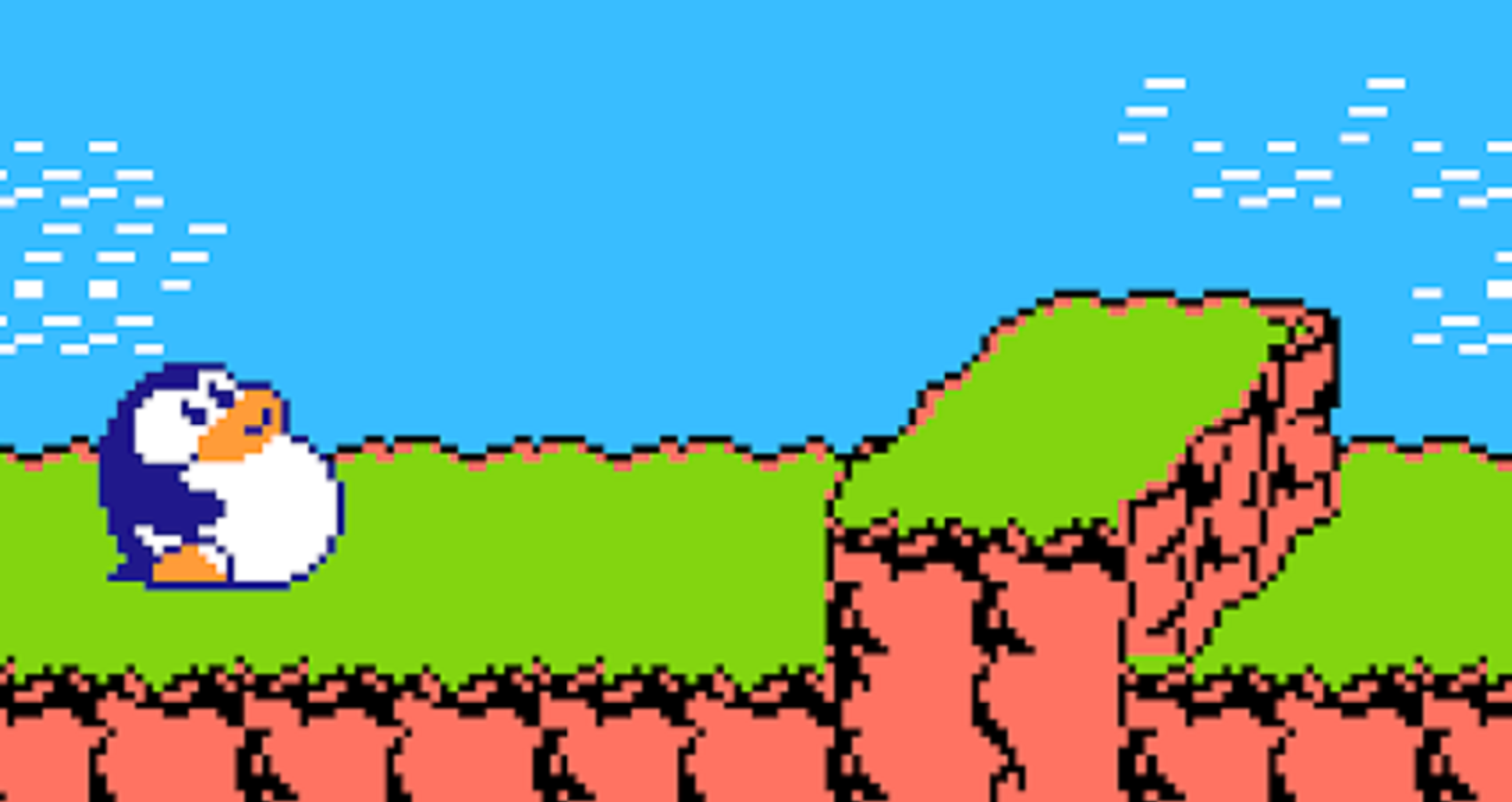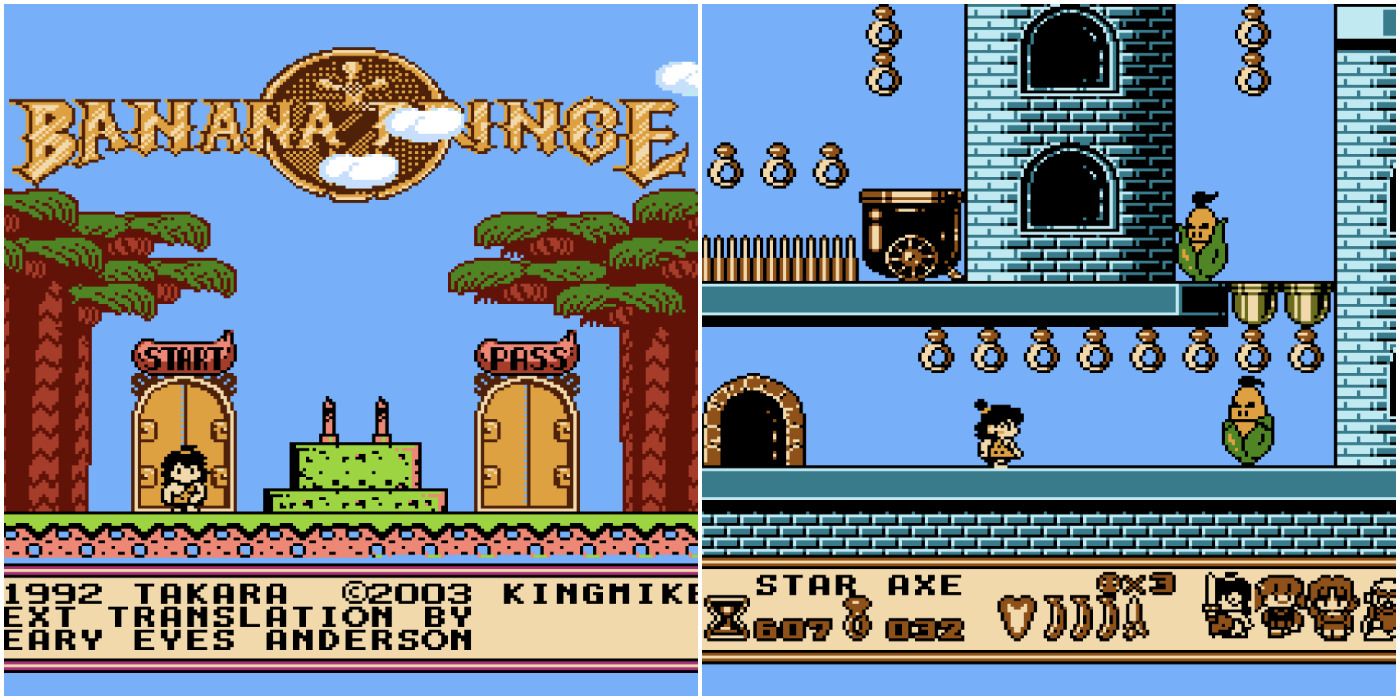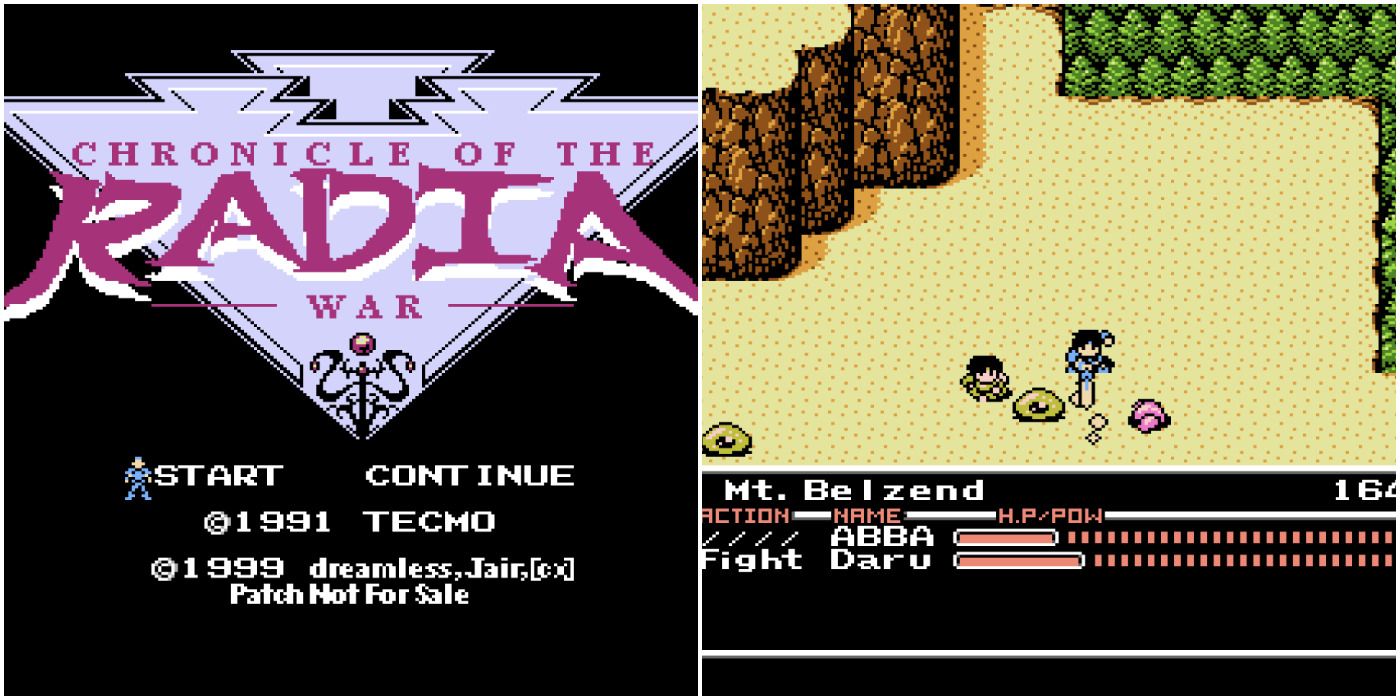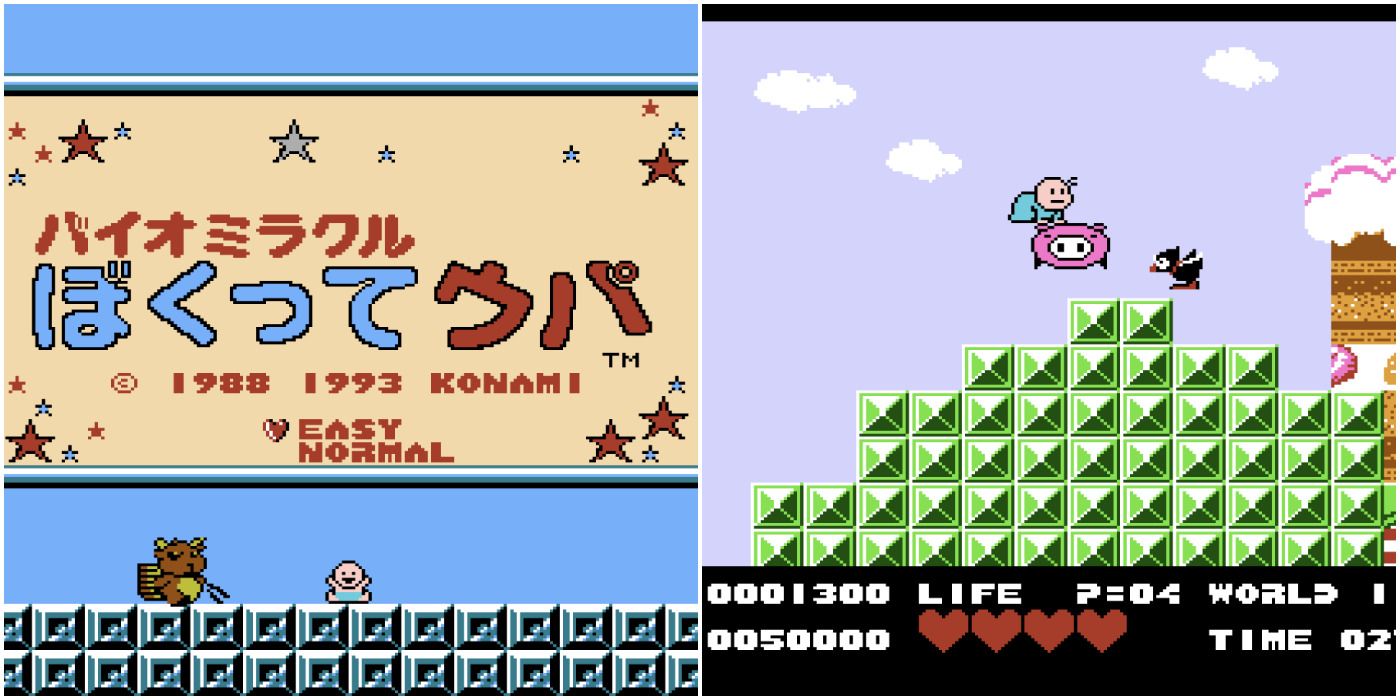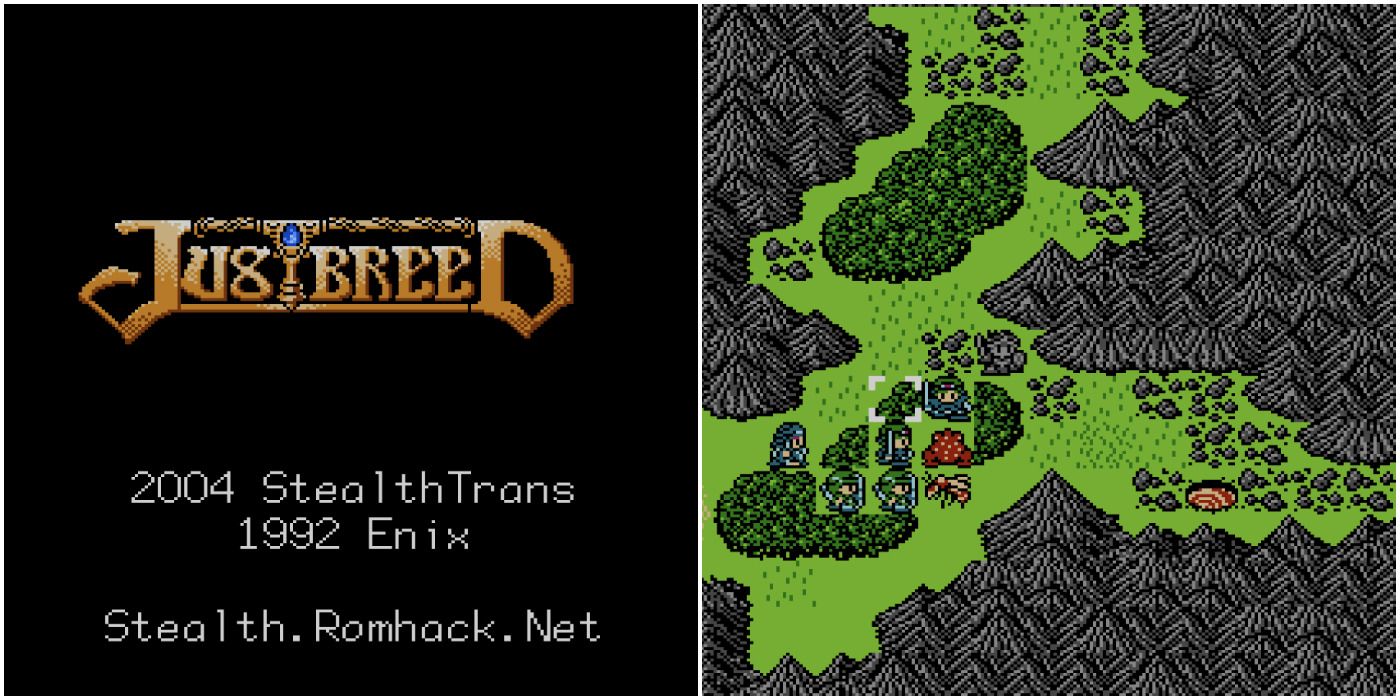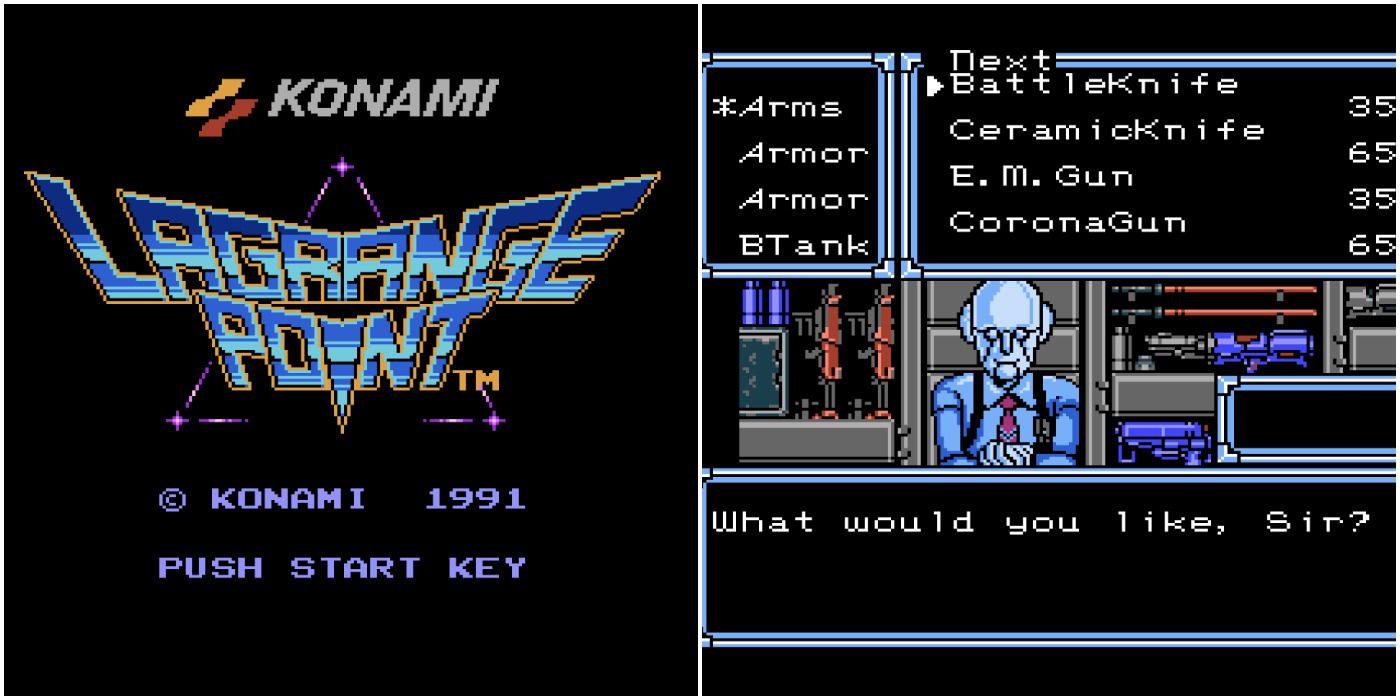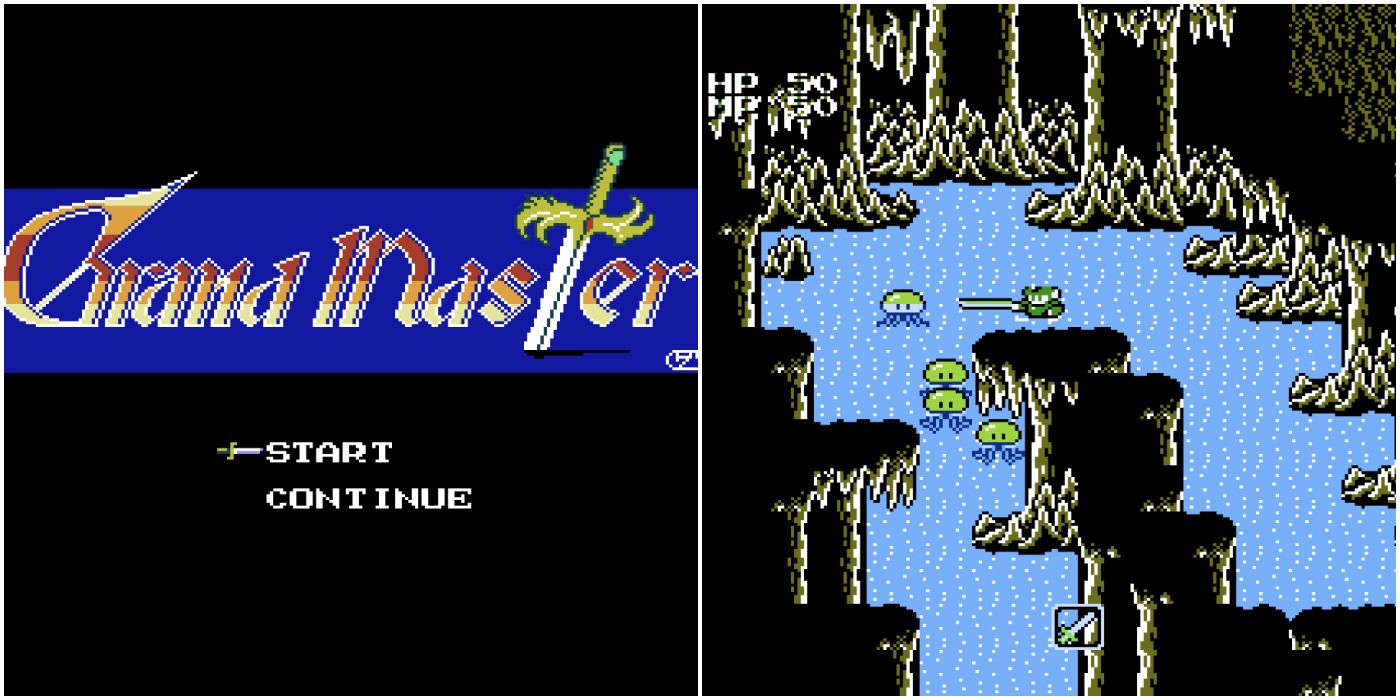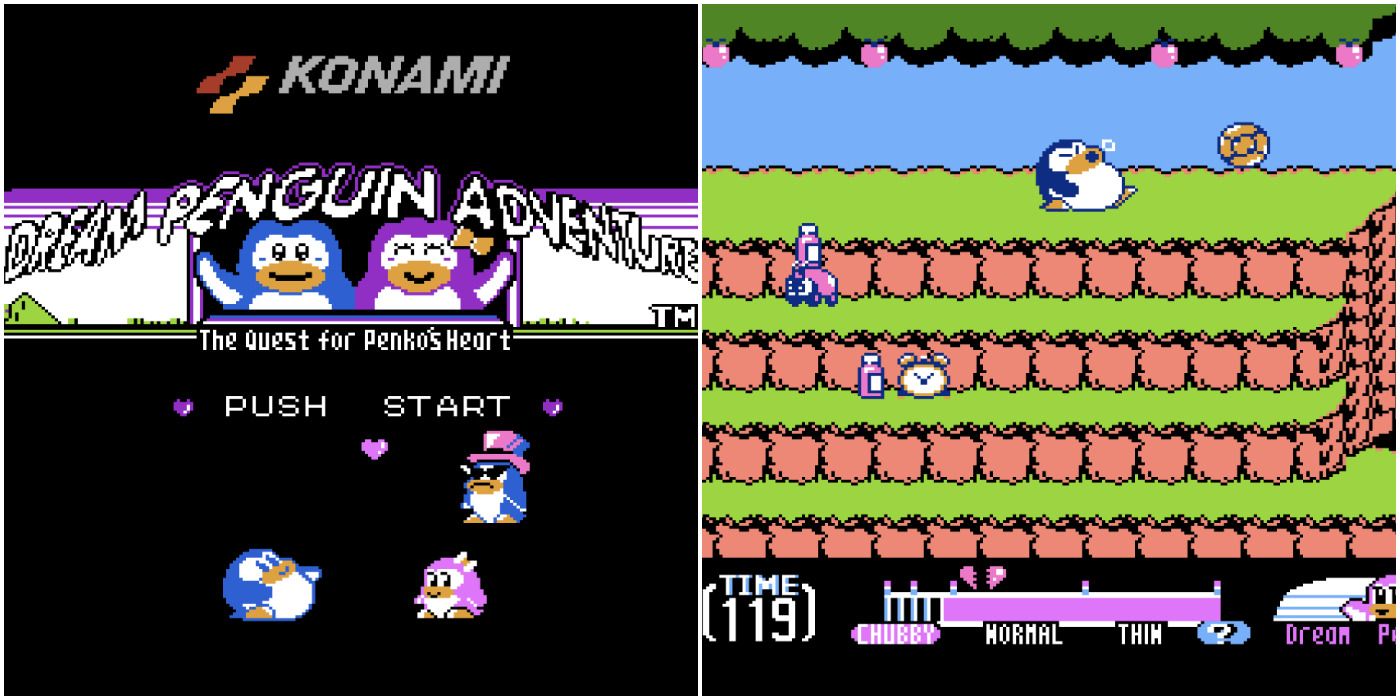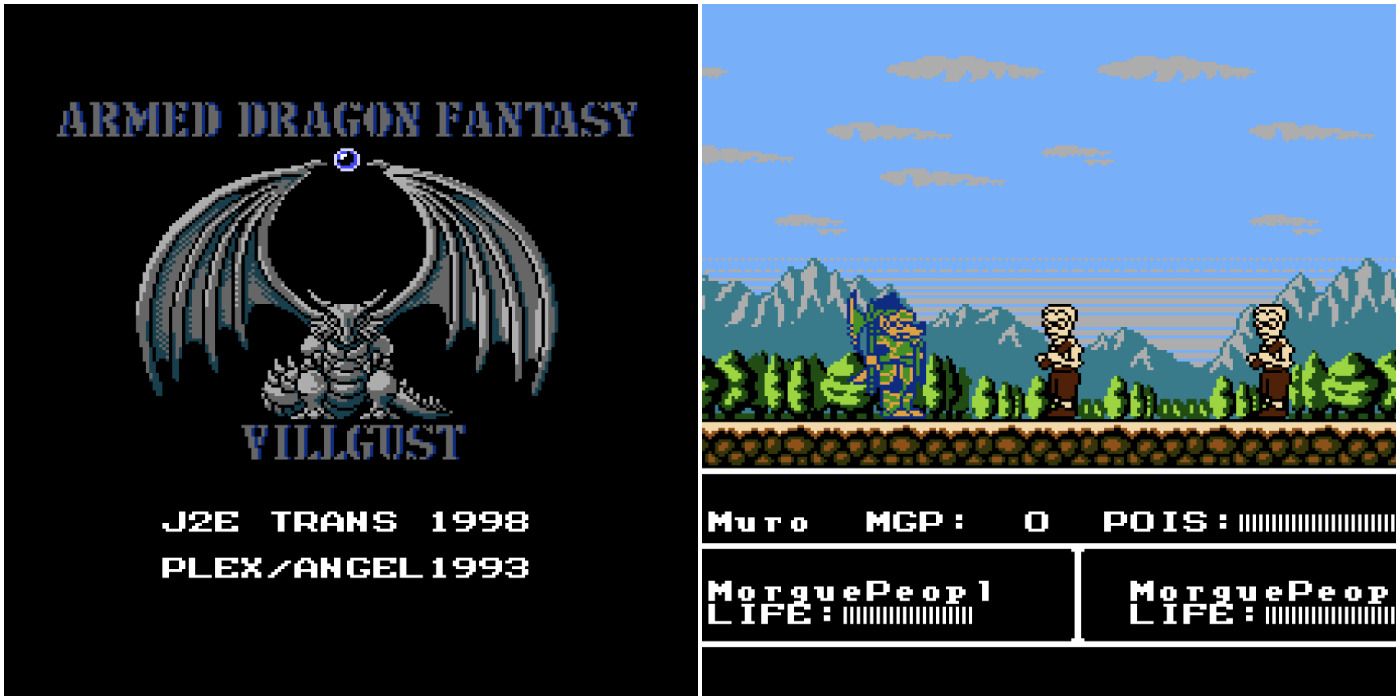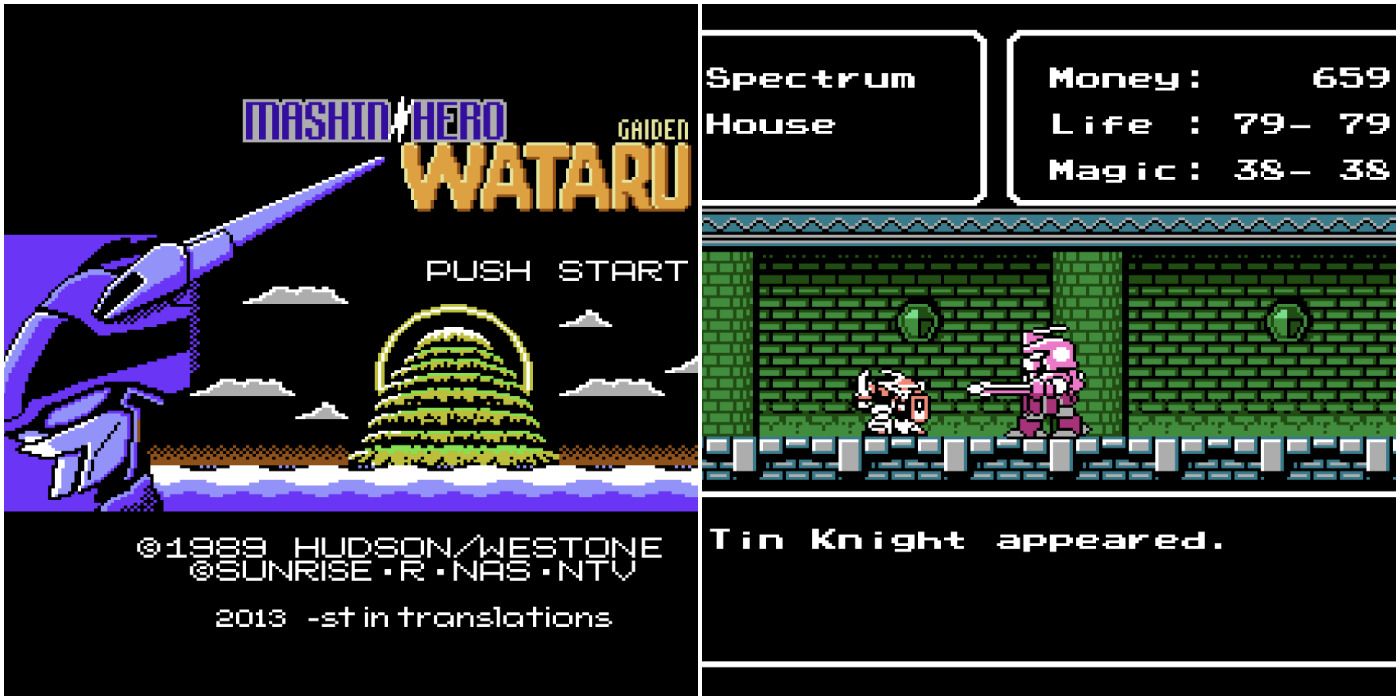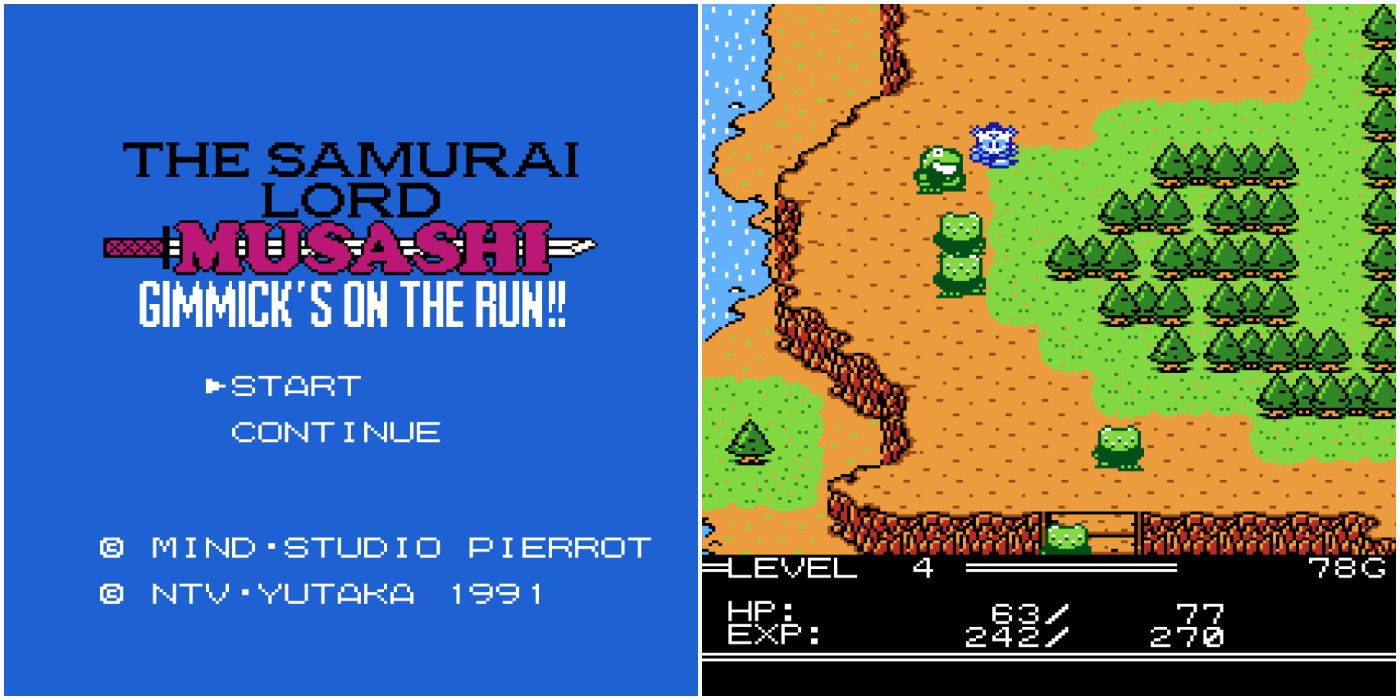Despite the NES being over thirty years old, Nintendo’s original console still has a few tricks up its sleeve. That is to say games once exclusive to Japan are finally coming over. It proves that it is never too late for a good game.
There was the original Mother, which was rebranded as EarthBound Beginnings in 2015. Last year the NES version of Kid Dracula was released via the Castlevania collection on Switch. And now a plethora of Kunio-kun games are available in another Switch collection. Will these ten long lost gems ever get officially released? Maybe, maybe not, but for now every entry on here have English fan patches for those interested.
10 Banana Prince
Developed by the now defunct KID and published by the Takara toy company, Banana Prince, or Bananan Ouji no Daibouken, was released for the Famicom in 1991. Technically it did release outside of there via Germany, but as it featured no English translation, it’s getting counted on here.
Players take on the roll of what seems to be a monkey-like prince fighting anthropomorphic food. Smash stuff with his club, plant seeds to spring across gaps with plants, and or buy stuff with collected rings to upgrade his arsenal. It's one of the better looking NES games thanks to the color pallet and overall design.
9 Radia Senki: Reimeihen
Radia Senki: Reimeihen, roughly translated to Chronicle of the Radia War, was developed and published by Tecmo for the Famicom in 1991. This action RPG has players traverse a world map and can trigger a random battle wherein they can then hack and slash enemies alone, or with other AI controlled party members. It is a bit slow and monsters don't pose much threat at first, but it is unique for a NES RPG and looks good as well.
8 Bio Miracle Bokutte Upa
Bio Miracle Bokutte Upa was developed and published by Konami and originally launched in 1988 for the Famicom Disk System. It stars a literal baby out to save his kingdom, which has been taken over by an evil entity. Go figure. Players will crawl, yes literally, through brightly colored and candy filled stages with the aide of a magic rattle that can balloon enemies. These inflated foes can then be jumped on to overcome obstacles, or pushed to hurt other enemies.
7 Just Breed
Just Breed was developed by Random House and published by Enix for the Famicom in 1992. Not many turn-based tactical RPGs exist on the NES and this is one of them. Players can freely explore cities like a "normal" RPG, but once players hit the world map, a tactical battle can randomly unfold. After every enemy is defeated the map can then be explored freely although there usually isn’t much there besides new locations like the aforementioned towns. Another unique feature is the auto-battle system, which surprisingly works quite well.
6 Lagrange Point
Lagrange Point was developed and published by Konami for the Famicom in 1991. While the gameplay is more traditional for a turn-based RPG, the look of the game is more advanced with sprites in particular being bigger and more detailed than most. The sci-fi theme is also uncommon. The coolest part about the game are the various shopkeepers who all have incredible pixel animations. Basically this game has a lot of personality.
5 Grand Master
Grand Master was developed and published by the now-defunct Varie corporation. Players can choose to travel to one of five starting areas. Gameplay, and the game's actual style, is reminiscent of Final Fantasy Adventure on the Game Boy.
It is also a little like Dark Souls, or more like Demon's Souls since that game had the selectable worlds from a hub area. Maps will always be the same and level progression will be kept, but all items will be lost upon death. The point is to "git good" in order to eventually vanquish each stage.
4 Yume Penguin Monogatari
Yume Penguin Monogatari, roughly translated to Story of the Dream Penguin but also referred to as Dream Penguin Adventure, was developed and published by Konami for the Famicom in 1991. It's about a penguin trying to lose weight in order to get back the love of his life. Each stage is timed and players must lose a given amount of weight within said time in order to complete the stage. Instead of hurting players, enemies will chuck food at the rotund penguin in order to get him bigger. Collecting health shakes will then cause players to slim down.
3 Kouryuu Densetsu Villgust Gaiden
Kouryuu Densetsu Villgust Gaiden, roughly translated to Armed Dragon Fantasy Villgust, was co-developed by Plex and TOSE and published by Angel for the Famicom in 1993. This world is filled with anthropomorphic animals with players taking on the role of a wolf knight.
Random battles will commence like a 2D action game similar to how Zelda II's transitions worked. However, if the auto-battle function is turned on, the game then resembles a typical turn-based RPG. Giving players the option, like other RPGs on this list, was unusual for the time.
2 Mashin Eiyuuden Wataru Gaiden
Mashin Eiyuuden Wataru Gaiden was developed by Westone and published by Hudson Soft for the Famicom in 1990. Like Kouryuu Densetsu Villgust Gaiden, players will randomly generate 2D battles walking around the world map in their knight armor, which looks a lot like a mech. This is actually based on an anime. Of the five games made, the West actually did get one, which was released as Keith Courage in Alpha Zones for the TurboGrafx-16 in 1989.
1 Karakuri Kengou Den Musashi Lord: Karakuri Jin Hashiru
Karakuri Kengou Den Musashi Lord: Karakuri Jin Hashiru, roughly translated as The Samurai Lord Musashi: Gimmicks on the Run, was developed and published by Yutaka for the Famicom in 1991. It is also based on anime and stars robotic samurai. Players can choose one of four scenarios, each with their own hero although all four play similarly. The game is basically The Legend of Zelda with more RPG mechanics like leveling up and equipment.

